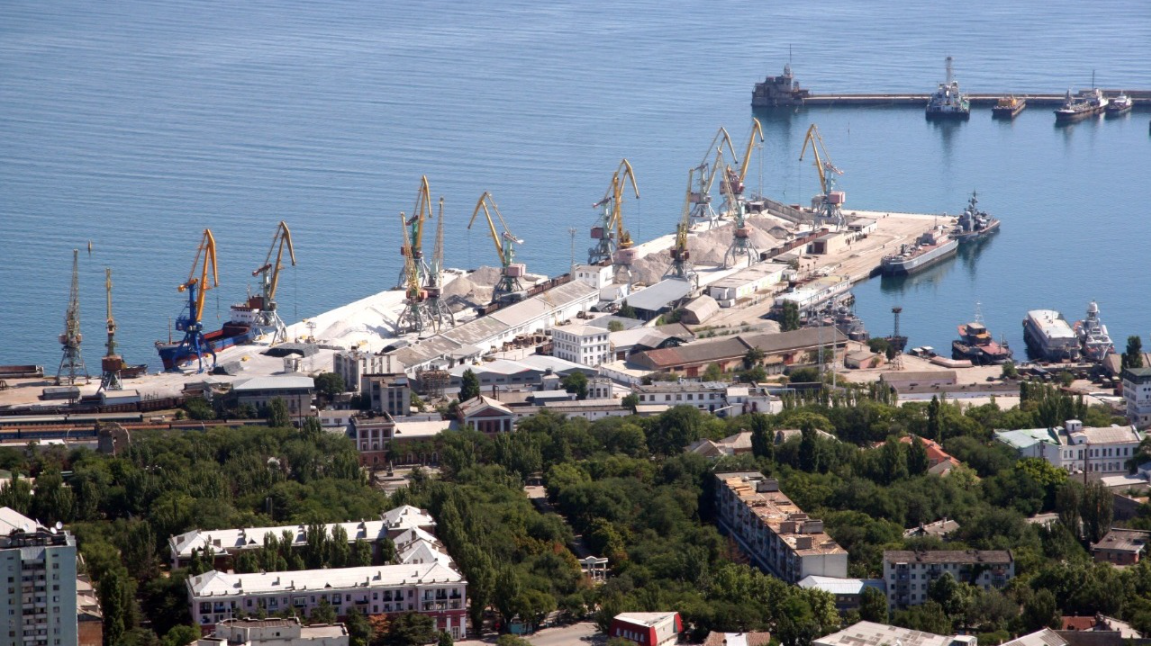As the subtitle of this article, the following hard but honest conclusion could be put: the Russian occupation of Crimea killed Crimean ports.
Five trade and two fishing ports of Crimea and Sebastopol desperately try to survive whereas the Kerch ferry does not work anymore. Ports lost their profitability and freight turnover as an outcome of Western sanctions and the decision of Ukraine to close ports for foreign vessels adopted in response to the occupation of Crimea and Sebastopol by the Russian Federation. The construction of the Kerch Bridge deprives Crimean ports of cargo and passengers from Russia. Moscow «strategists» recommend turning them into marina for yachts. Coastal territories of ports are likely to be occupied soon by new houses for Russians «coming» to Crimea.
Before the opening of the Kerch Bridge, Crimea sea ports have been the only infrastructural objects which Russia could use to supply raw materials and goods to the occupied peninsula. They have been also very important to transport Russian occupation troops, military equipment and materials.
Their uniqueness required quick actions and decisions. «The State Council of the Republic of Crimea» «nationalized» (expropriated) all Ukrainian enterprises and property in the sphere of sea transport on the second day after pseudo-referendum – on March 17, 2014. «State Unitary Enterprise «Krymskie Morskie Porty» \ Crimean sea ports has been set up on June 18, 2014, with its headquarters in Kerch, Yalta, Feodosia, Yevpatoria and Kerch trade ports as well as «Derzhgidrografia» are its branches (without the status of independent legal entity).
«The Legislative Assembly of Sebastopol» created an enterprise «Sebastopol Port» on the basis of the Sebastopol sea trade port and Sebastopol sea fishing port on March, 27, 2014. «The Government of Sebastopol» adopted the order «About Creation of the State Unitary Enterprise «Sebastopol Sea Port» on June, 2, 2014. This SUE included Sebastopol sea trade and fishing ports, Captain Service of the Sebastopol sea fishing port and «Sebastopol branch «Derzhgidrografia». That is to say, «Sebastopol Sea Port» included all Sebastopol sea infrastructure securing sea passenger and freight transportation.
The response of the government of Ukraine headed by Arsenii Yatsenuk has not been as decisive and quick as Russian actions, though, the law determining the legal status of Crimea and Sebastopol as temporarily occupied territories has been adopted early – in April 2014.
The Ministry of Infrastructure of Ukraine issued the order «About Closing Sea Ports of Crimea and Sebastopol» only on June 16, 2014, though the Ukrainian Sea Ports Authority (USPA) submitted the draft order two months before – on April, 1, 2014. In accordance with the ministerial order, the entrance to sea ports of Kerch, Sebastopol, Feodosia, Yalta and Yevpatoria has been closed. It has been recommended for the USPA to introduce respective amendments to the Register of Sea Ports of Ukraine and dismantle administrations of Crimean ports.
Sanctions of Ukraine, USA and EU
The State Enterprise «Feodosia Enterprise to Supply Oil Products» has been the first to be covered by USA sanctions (16.07.2014). Before the occupation, it has been controlled by Serhii Kurchenko, «young oligarch», who acted for the benefit of the Yanukovych’s «Family». The Feodosia oil terminal secured the smuggling of oil products (the so-called «Livela» corruption scheme).
The Crimean «authorities» transferred expropriated oil terminal to the illegally created «State Unitary Enterprise «Chornomornaftogaz» in 2015. The terminal accumulated large debts and has been turned into the Joint Stock Company «Morskoi neftianoi terminal» \ Sea oil terminal in the summer of 2019. Oil terminal together with sea terminal has been sold for 651,2 million rubles in December 2019. The buyer – Moscow JSC «Firma Gunas» – has been created in February of the same year. Valentin Dorosh, the retired colonel of the Russian Ministry of Internal Affairs, has been its director and the only known shareholder. He has been also the head of the Municipal Unitary Enterprise «Ritualnye uslugi» \ Funeral services in Russian Kursk. The Russian mass media are inclined to believe that Serhii Kurchenko succeeded in returning the Feodosia oil terminal under his control.

JSC «Morskoi neftianoi terminal» created on the basis of the State Enterprise «Feodosia Enterprise to Supply Oil Products». Photo: c-inform.info
USA, EU and Ukrainian sanctions gradually covered all enterprises illegally created by the Russian Federation on the basis of expropriated Ukrainian ports. Sanction lists are not synchronous. As it is known, Ukraine adopted the law «About Sanctions» only in August 2014. It has been applied the first time one year later. It should be also noted that sanctions of the National Security and Defense Council of Ukraine (NSDCU) about legal entities of the Russian Federation who seized Ukrainian ports have been enacted mainly in 2017 – two-three years later than USA and EU sanctions.
EU sanctions do not cover Yalta and Yevpatoria sea ports. At the same time, it is not the «shortcoming» as EU sectoral sanctions restrict the entrance of ships to Crimean ports. They also contain direct ban for tourist cruise ships. As an outcome, foreign cruise tourists disappeared in Crimean ports. Popular cruise ships Azamara, Oceania Cruises, Regent Seven Seas Cruises, Windstar Cruises and MSC Cruises replaced Yalta and Sebastopol with ports of Turkey, Romania, Georgia and Bulgaria in April 2014. Numerous announcements by Russian and Crimean public officials about renewal of cruise tours and ferry routes (in particular, Yevpatoria-Zonguldak route) turned out to be false. Moreover, Russia itself did not manage to launch regular cruise tours from Russian to Crimean ports.
Below is the list of port enterprises of Crimea and the Russian Federation included into sanction lists of the National Security and Defense Council of Ukraine (NSDCU), the USA Department of Treasury and the EU Council. If applicable, we indicate changes in their status and necessary amendments. Names of legal persons are given in accordance with their state registration in Russian and Ukrainian jurisdictions.
Legal persons of the Russian Federation created on the basis of appropriated Ukrainian ports in the Autonomous Republic of Crimea and Sebastopol
1. The State Unitary Enterprise of the Republic of Crimea (hereinafter referred to as SUE RC) «Krymskie morskie porty» \ «Crimean sea ports».
In sanction lists of NSDCU – since 16.09.2015, USA – since 30.07.2016 and EU – since 16.09.2017.
2. The branch of SUE RC «Krymskie morskie porty» \ «Crimean sea ports» – «Yevpatoria trade port» (before the expropriation by the Russian Federation – the State Enterprise of Ukraine «Yevpatoria sea trade port».
In sanction lists of NSDCU – since 15.05.2017, USA – since 30.07.2015. It is absent in EU sanction lists.
3. The branch of SUE RC «Krymskie morskie porty» \ «Crimean sea ports» – «Kerch trade port» (before expropriation by the Russian Federation – State Enterprise of Ukraine «Kerch sea trade port»).
In sanction lists of NSDCU- since 15.05.2017, USA – since 30.07.2015, EU – since 25.07.2014
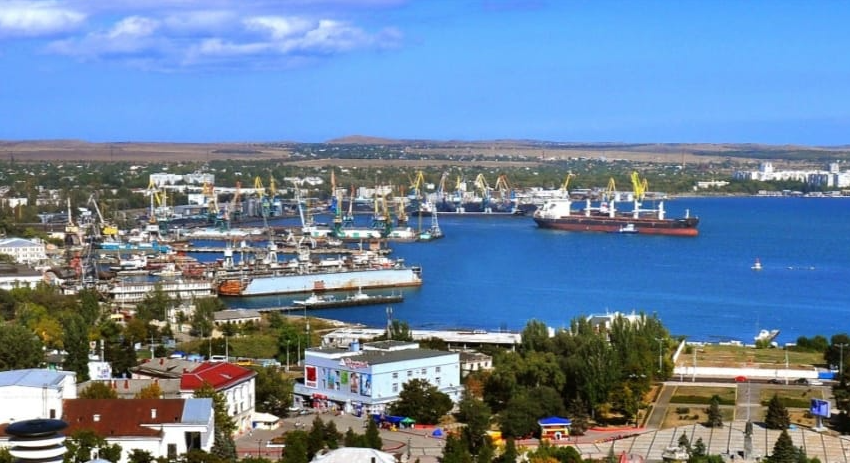
The Kerch trade port. Photo: Isachenko Grigoriy
4. The branch of SUE RC «Krymskie morskie porty» \ «Crimean sea ports»- «Kerch trade port» (before expropriation by the Russian Federation – State Enterprise by Ukraine «Captain Service of the Kerch sea fishing port»).
In sanction lists of NSDCU – since 15.05.2017, EU – since 16.09.2017. It is absent in USA sanction lists.

The Kerch sea fishing port. Photo: RFE/RL
5. The branch of SUE RC «Krymskie morskie porty» \ «Crimean sea ports» – «The Kerch Ferry Line» (before expropriation by the Russian Federation – State Enterprise «State Shipping Company «The Kerch Ferry Line»).
In NSDCU sanction lists – since 15.05.2017, USA – since 30.07.2015 and EU – since 16.09.2017

The Kerch Ferry Line. Photo: crimeaports.ru
6. The branch of SUE RC «Krymskie morskie porty» \ «Crimean sea ports» – «Feodosia trade port» (before expropriation by the Russian Federation – State Enterprise of Ukraine «Feodosia sea trade port»).
In sanction lists of NSDCU – since 15.05.2017, USA –30.07.2015, EU – 16.09.2017
7. The branch of SUE RC «Krymskie morskie porty» \ «Crimean sea ports» – «Yalta trade port» (before expropriation by the Russian Federation – State Enterprise of Ukraine «Yalta sea trade port»).
In NSDCU sanction lists – since 15.05.2017, USA – since 30.07.2015. It is absent in EU sanction lists

Yalta trade port. Photo: facebook.com/SUE.RC.CSP
8. State Unitary Enterprise of Sebastopol City «Sebastopol sea port» (before expropriation by the Russian Federation – State Enterprise of Ukraine «Sebastopol sea trade port»). In NSDCU sanction lists – since 15.05.2017, USA – 30.07.2015, EU – 25.07.2014
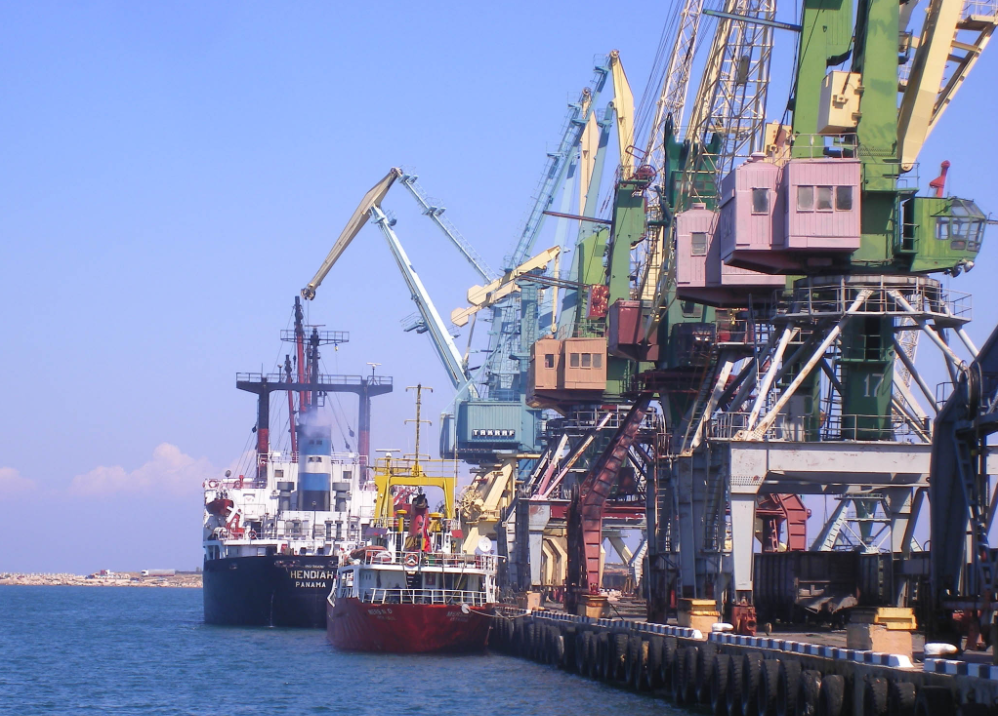
The Pier of the Sebastopol sea port in Kamyshova bay of Sebastopol. Photo: sevmp.ru
State and private companies of the Russian Federation related to the activity of Crimean ports:
1. The Federal State Unitary Enterprise «Rosmorport» (founders – the Federal Agency for State Property Management, the Federal Agency for Maritime and River Transport).
In NSDCU sanction lists – since 17.10.2016. It is absent in USA and EU sanction lists.
2. JSC «Rostovski port» (founder – the Committee for State Property Management of Rostov oblast).
In NSDCU sanction lists – since 17.10.2016. It is absent in USA and EU sanction lists.
3. The Federal state budgetary institution «Administration of Azov sea ports».
In NSDCU sanction lists – since 19.03.2019. It is absent in USA and EU sanction lists.

Rostov-na-Donu port (part of the «Administration of Azov sea ports»). Photo: azovseaports.ru
4. LLC «Kerch sea port «Kamysh-Burun» (In Ukrainian jurisdiction – LLC «Kerch sea port «Kamysh-Burun». In both jurisdictions founders are four LLCs from «Altcom» group).
In NSDCU sanction lists – since 15.05.2015.
It is absent in USA and EU sanction lists.
Changes: the legal person was liquidated and excluded from the Russian business register EGRUL on 12.12.2018).
5. LLC «Gen Invest».
In NSDCU sanction lists – since 17.10.2016. It is absent in USA and EU sanction lists.
Changes: in August 2018 it has been renamed to LLC «Proizvodstvenno-transportny kompleks «Kerch». The bankruptcy case has been initiated in the Russian Federation in November 2020.
6. LLC «AnRusKrym».
In NSDCU sanction lists – since 19.03.2019. It is absent in USA and EU sanction lists.
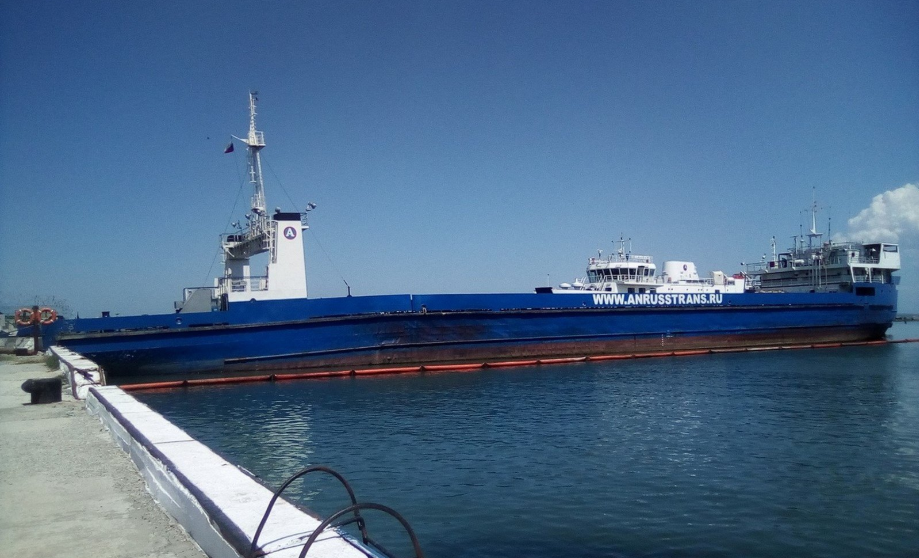
Railway ferry «Annenkov»in «Krym» port (Kerch), July 7, 2018. Photo: kerch.fm
7. LLC «Port Mechel-Temruk» (LLC «Mechel-Trans» is the managing company).
In NSDCU sanction lists – since 17.10.2016. It is absent in USA and EU sanction lists.

Port «Mechel-Temruk» on Taman Azov seashore, the Russian Federation. Photo: portnews.ru
8. LLC PKF «Port «Korvet».
In NSDCU sanction lists – since 17.10.2016. It is absent in USA and EU sanction lists.
Changes: it is under liquidation since 25.12.2018 (activity stopped in January 2020). At the same time, LLC «Gruzovoi terminal «Korvet» was registered in 2018. The sanctions are over in 2019
Impact of sanctions on the economy of Crimean ports
Freight turnover. Before the occupation of Crimea by the Russian Federation, the sea freight transport did not play serious role in shaping gross regional product. In 2013 only 1,9% of the freight transport has been conducted by sea in Crimea, in accordance with the data of Statistics Department of the Autonomous Republic of Crimea. Peculiarities of the geography of the Crimean peninsula and transport infrastructure of Crimea and Ukraine allowed satisfying the regional consumption by automobile and railway transport. In 2013 automobile transport contributed to 70,8% of the total freight traffic and railways – to 27,3%. The development of sea freight transport required complex reconstruction of ports and creating more opportunities for container transportation.
Crimean ports exported Ukrainian grain and metal; they also secured transit export of liquefied natural gas and oil products from Kazakhstan and the Russian Federation (Sebastopol, Kerch, Feodosia). Mass consumption goods, mainly, from Turkey, have been imported through Yevpatoria port; passenger cars – through Sebastopol port. Cruise ships visited Yalta and Sebastopol ports.

Being monopolist does not mean to be successful business. This is the story of expropriated Crimean ports. As an outcome of sanctions and shrinking economic activity in occupied Crimea, the volume of shipment of goods in Crimean ports fell down by four times in 2014. Occupation authorities had to admit this fact. Andrei Vasuta, one of directors of the newly created association of Crimean ports, informed that «in last three years the volume of shipment of goods decreased by four times – to two million tons in 2014. The work of ports has been negatively influenced by international sanctions about Crimea. As a result, foreign ships do not enter republican harbors anymore. The Ukrainian transport blockade resulted in two times reduction of the transit shipment of goods».
Number of entrances of foreign (non-Russian) ships to closed ports of Crimea falls down every year. In accordance with the official statistics of the Russian Federation, the volume of the official export and import reached the minimum level. Over 80% of all goods are transshipped in Kerch port. More to that, cabotage contributed to more than 90% of freight turnover in all Crimean ports. In other words, almost all freight turnover is going on between RF – Crimea – RF. It explains the «overload» of the Kerch port.
The monitoring group of the «Maidan zakordonnykh sprav» Foundation («Maidan of Foreign Affairs») and the Institute of Black Sea Strategic Studies regularly update the public register of ships violating sanctions. It is published by BlackSeaNews portal. In accordance with monitoring results, there has been almost no entrances of foreign ships (non-Russian) to Crimean ports since the beginning of 2020.
The data of the register supplies evidence that sanctions significantly influenced the work of Crimean ports. The loss of flag, the threat of arrest for the ship, the captain and the crew make entrances to occupied Crimea too risky.
In accordance with open data, the reduction of the freight turnover in ports of Crimea and Sebastopol looks like this: 2016 – 13,8 million tons, 2017 – 11 millions, 2018 – 8,7 millions, 2019 – 4,3 millions (without data of Sebastopol port for the second half a year).
As an outcome, the revenues of enterprises fell down. Western sanctions have been the main cause of the lack of cargo for shipment during first four years of the occupation of Crimea. After 2018, the Kerch Bridge became the main «competitor» of EU and USA sanctions.
When the Kerch Bridge opened in 2018 the loss of the State Unitary Enterprise «Krymskye morskie porty» reached unprecedented 411,8 million rubles. Though, the enterprise has been unprofitable for years before.

The activity of the SUE «Sebastopol sea port» has been also unprofitable for years: in 2018 losses reached 188 mln rubles (the freight turnover fell down to 200 thousand tons), in 2017 – 62 mln rubles, in 2015 – 115 mln rubles.
According to «Ports of Ukraine» media, in 2013 the freight turnover of Crimean trade ports has been shaped by oil and oil products (4 million tons), metals (3,2 million tons), grain (1,4 million tons), construction materials (0,75 million tons) and coal (0,54 million tons). Today the lion’s share of this freight traffic disappeared. The share of the Kerch sea port drastically increased to 82% whereas the share of other ports decreased significantly.
According to «Krymskie morskie porty», 90% of the sea freight transport goes to ports of the Russian Federation and only 10% – to other destinations. At the same time, the foreign trade turnover of Crimea keeps falling. In comparison with 2013, it fell down by 20 times in 2019!
According to Eurasianet.org, the volume of export and import freight in Crimean ports (including Sebastopol) decreased from 691,8 thousand in 2017 to 642 thousand tons in 2018. Given that in 2018 the freight turnover of all Crimean ports has been 8,7 million tons, then, the export share has been less than 10%.
During last years food products and agricultural raw products played the main role in illegal export from Crimean ports. In 2019 they made up a bit more than half of all export from Crimea ($ 17,4 mln from total $ 33,7 mln). It is mainly the grain transported by sea to the Near East (predominantly, to Syria). According to the Russian Federal Service for Veterinary and Phytosanitary Surveillance, grain export from Crimea exceeded 307 thousand tons in 2019. It is mainly the wheat (210 thousand 19 tons), the barley (97 thousand 73 tons) and mustard (127 tons).
In April 2019 Crimea and Syria signed Memorandum on trade and economic cooperation. The Memo stipulates the launch of the joint shipping company to secure regular sea freight transport between ports of Crimea and Latakia. This plan has not been implemented by the end of 2020. Plans of the «head of Crimea» to use the expropriated fleet of «Chornomornaftogaz» for oil and gas exploration near Syria also failed.
Illegal grain export from Crimea is conducted through two private grain terminals. The first is situated in Dokovaja harbor in Sebastopol. It belongs to stevedore company «Avlita». Rinat Akhmetov, the Ukrainian oligarch, has been its owner through «Portinvest». (The transfer of Akhmetov’s port assets to managers of his godfather Igor Krutoi and later – to the company from the Russian military industrial complex see in the report by the Center of Journalist Investigations «Krutaja perevalka» \ «Cool transshipment»).

Ship Capt Abeda loads grain for Syria at Avlita terminal in Sebastopol 31.01.18 Photo: blackseanews.net
ABC grain terminal has been built by «Pole-Port» company from Dnipropetrovsk on the territory of the Kerch fishing port at the beginning of 2000s. One year ago Galina Vobjachenko, Dnipro inhabitant, and Ivan Kopylov, Kerch inhabitant, have been indicated as founders of LLC «Zernovoi terminal ABC» in Ukrainian as well as Russian business registers. Since March 2020 Olena Vobjachenko is given by the Russian register «EGRUL» as the 100% owner of the LLC. She is also founder of Russian LLC «Pole-Port» and «Pole-Port-Yug».
None of companies-owners of grain terminals («Avlita» also ships the metal) registered in Russia are included into Ukrainian or Western sanction lists.
Products of chemical enterprises in Crimea – titanium and soda factories owned by Ukrainian oligarch Dmytro Firtash – form significant share of illegal export from closed ports of Crimea. According to the Crimean Statistics Committee, the value of the export of chemical products from Crimea reached 7,34 million USD in 2019.
The sea shipment of ilmenite concentrate from Ukraine to the titanium factory in Armjansk city (Armjansk branch of JSC «Ukrainian Chemical Products») is known as the «ilmenite scheme». It is one of the rudest violations of Ukrainian restrictions about Crimean ports as well as USA and EU sanctions. The essence of the ilmenite supply scheme is that some of its elements (routes) are absolutely legal and legitimate whereas the whole scheme works to avoid sanctions. Let us take an example. The ilmenite concentrate is loaded in the Ukrainian port of Illichevsk and transported to the Turkish port (Russian and Bulgarian ports were used before) where it is loaded on Russian ships. Russian ships pretend to carry it to «Kavkaz» port but de facto they switch off the AIC system and carry the concentrate directly to Crimea or reload it to other ships which in their turn deliver it to the Kerch port Kamysh-Burun (more detailed exposure of the scheme is presented in our report «Schemes to avoid Crimean sanctions»).
For ships illegally entering Crimean ports, main instruments to avoid sanctions and minimize risk are as follows:
- Other (non-Crimean) port is indicated as the final destination;
- They enter and stay in Crimean port after switching off AIC system;
- Loading \ unloading is conducted under switched off AIC system in the port and in the sea;
- Ships move in Black and Azov seas with switched off AIC system.
Closing the ferry and massive unemployment \ dismissal
Systemic firing of the personnel became one of the most sensitive outcomes of the unstable situation of Crimean ports. In 2016 Petro Zaporozhets, «the deputy of the State Council», said that there has been catastrophic situation in Crimean ports: «Before 2016 more than 1 300 people worked in Feodosia port; today only 400 people work. Around 600-700 people worked in Yevpatoria, now only 136 people… the port is paralyzed».
From the very beginning it has been clear that the Kerch Bridge will cut the lion’s share of revenues of Crimean ports. The automobile and railway transportation of passengers and goods is cheaper than the sea transportation. It is less dependent upon the weather.
In 2018 «the ministry of transport» of Crimea announced its plans to turn trade ports into passenger ports. Western sanctions have been called the main raison. As it has been said, «before their influence was not felt, on the opposite – they stimulated the development». «Upon the order of the Ministry of Economic Development of the Russian Federation, given sanctions, we have to prepare the concept for the development of «Crimean sea ports». The main idea is the following: the infrastructure of Crimean sea ports should be reoriented towards recreation and passengers. It is passenger transportation and yachts», said «minister» Zakharov.
However, no action has been taken to implement this concept. In 2020 it has been decided to fire from April 1 over 600 workers of Kerch trade and sea ports, the Kerch ferry as well as city hospital for workers of the sea transport.
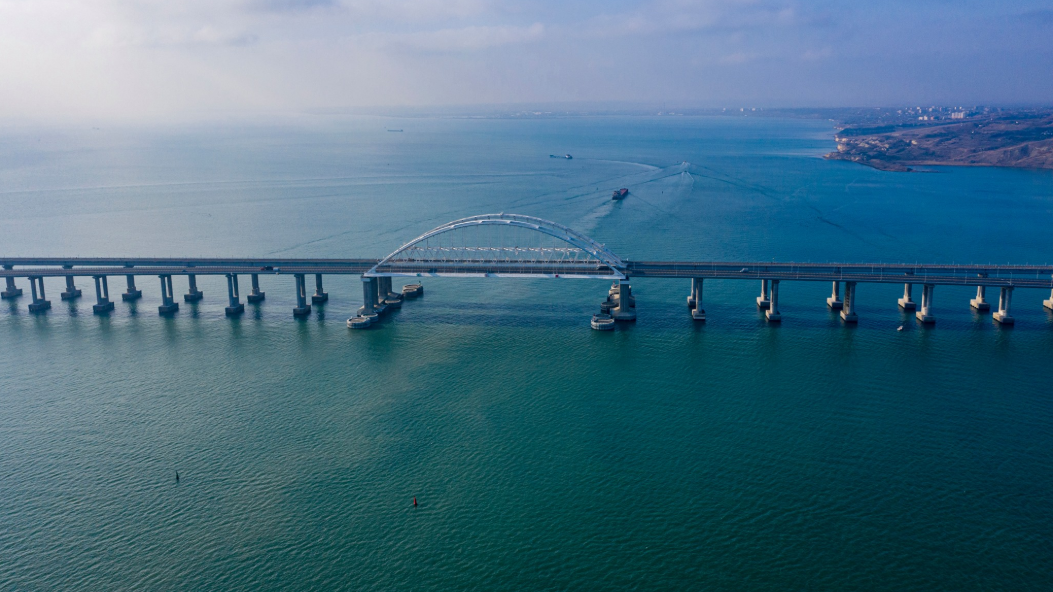
The Kerch Bridge. Photo: most.life
In September the Kerch Ferry serving the line Crimea – Caucasus has been closed for unknown period. «The reason is the lack of demand. The main activity of the Kerch Ferry has been about transportation of railway cars with cargo, passengers and automobiles. After the opening of the Kerch Bridge the demand for the sea transportation drastically fell down», said the news announcement of «AnRussTrans».
The safety of navigation
The construction of the military and strategic object named «The Crimean Bridge Passage» created one more problem: the bridge negatively influenced the passability of the Kerch-Yenikale canal. The canal regularly becomes shallow and requires labour intensive dredging works which have not been conducted for years.
Before the occupation, the Ministry of Transport of Ukraine provided 9,5 m depth in the Kerch-Yenikale canal. In 2015 the real draft has been up to 8 meters.
According to the opinion of experts from the Captain Service of the Kerch port, urgent dredging works are needed. But the port has neither money nor the power to do them. It directly threatens the safety of civic and military navigation in the Kerch Strait.
After the beginning of the construction of the Kerch Bridge, the mass media informed that the canal became too shallow. In March 2019 the ship «Maryland» under the flag of Liberia ran aground in the canal when it came from Mariupol. It has be reported that it has been caused by the insufficient depth of the canal.
Captains of Crimean ports warn about risks near other piers. The sea depth along the large breakwater in Feodosia sea port (pier # 1) has been from 8,8 to 12 m. However, last year only ships with draft from 6 to 10 m could dock there. This year the sea became more shallow by 0,1 m.
In Yevpatoria several years ships with draft up to 6 m could on Black Sea site, up to 4 m – on Yevpatori and Donuzlav sites. In 2019 the Black Sea site became shallower by 0,5 m whereas the Northern part of Donuzlav site – by one meter.
Occupants have to confirm the same problem in Sebastopol. There is an acute shortage of deep piers for ships with draft over 5 meters, in particular, in Autumn-Summer when some civic ships go down from rivers to Sebastopol for the winter season.
There are two causes of this situation: ports do not have their own resources to do dredging (as an outcome of sanctions and opening of the Kerch Bridge) and unwillingness of the occupation administration of Crimea to rescue Crimean ports.
Occupants follow their policy since the first days of Crimean occupation: large investments are made only in projects needed by the military.
Recommendations
The main goal of sanctions as instruments of economic war against the aggressor is to make the Crimean peninsula too expensive for the aggressor to occupy and, ultimately, to force Russia abandon it. From this point of view, sanctions should be expanded and strengthened, including the sphere of Crimean ports. To author’s opinion, Ukraine should play the leading role.
Unfortunately, up to now Ukraine has not been consistent in shaping legislative conditions and applying additional actions (sanctions) to create more risky and «toxic» environment around issues related to the activity of Crimean ports.
Here are the first priority tasks:
- To cancel the law about the free economic zone «Crimea» which makes possible the activity of the Ukrainian business in Crimea and undermines the effect of Western sanctions;
- To amend the sanction legislation, make restrictions clear and precise and introduce the responsibility for their breach;
- Application of sanctions to natural and legal persons must include the list of their blocked assets;
- To introduce criminal and administrative responsibility for violating sanctions (restrictions) – from fines, confiscation of ships to imprisonment
It should be noted that the Criminal Code should envision the formal composition of this crime, i.e. not requiring proving the evil intent and harm incurred (as it is stipulated in the draft law 4002)
- To introduce responsibility for avoiding sanctions. First of all, it should be applied for using companies-proxies and switching off AIC system as it is practiced to hide the entrance of ships to Crimean ports; it threatens the safety of navigation.
International legislation does require that ships must have obligatory AIC equipment but it does not envision responsibility for not working equipment. The practice of the maritime navigation did not need such measures before the occupation of the Crimean territory by the Russian Federation and before Azov and Black Seas have been turned into internal seas of Russia. Now this measure is urgently needed.
- To expand sanctions on contracting parties of legal entities illegally created on the basis of Ukrainian ports. First of all, it is about ports of the Russian Federation and other countries as well as all persons involved into illegal transportation.
That is to say, sanctions should cover ports, recipients of cargo and passengers from Crimean ports and, vice versa, ports which send the cargo and passengers to Crimean ports. Here is an example. Moscow Northern river cargo port ships the cargo to the Kerch trade port. The following persons should be sanctioned: Northern river cargo port, ship owner, operating company and owner of the cargo.
By taking all indicated and other necessary decisions, Ukraine declares its readiness to struggle for the de-occupation of Crimea and calls our Western partners for support and assistance. There is only one risk not to get this support – it is about excessive influence in Ukraine of political will, political expediency and selfish interests of the senior state management (regardless of their names).

